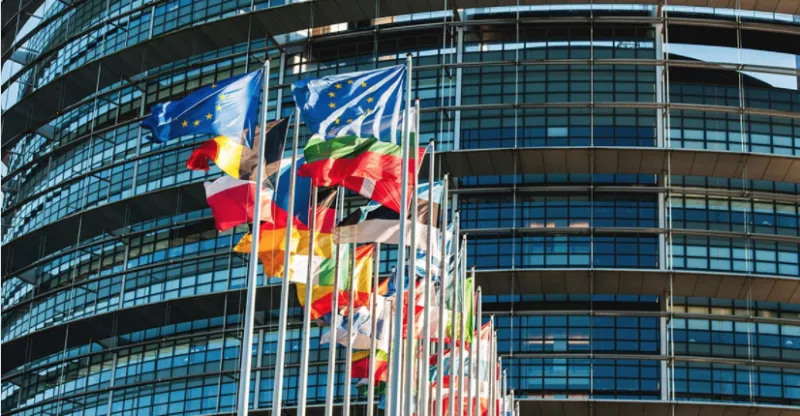It was easy to forget amid all of the exuberance of last year that what goes up must eventually come down. Something had to give – and it has. Equity markets have corrected worldwide after strong growth figures forced investors to face up to the threat of central bank normalisation.
In Lyxor’s view, markets were always going to start adjusting to rising inflation and rates at some point. More volatility was therefore inevitable. Europe was no exception, in spite (or perhaps because) of its economic recovery. There’s no need for panic, but investors cannot afford to be complacent even if, according to the latest State Street Investor Confidence Index, they are currently more confident in Europe than anywhere else*.
Investors may need to adjust their positioning more frequently as we move through the year, as countries and sectors rotate. Picking the right ones, at the right time, will be the key to sustaining returns in the months ahead.
The backdrop
The eurozone economy is in recovery mode and we expect growth of around 2.1 percent this year, just ahead of the wider consensus. Leading economic indicators, such as eurozone manufacturing PMI and the German manufacturing Ifo are at all-time highs. The employment picture has improved hugely, but there’s still more to come.
Prospects for economic and institutional reform – an essential ingredient in any sustained long-term recovery – have improved. Better EU growth, a more Europhile Germany, and the relatively smooth path of Emmanuel Macron’s reforms in France are all supportive. The nature of those eurozone reforms is yet to be determined however, with dividing lines between North and South still evident. With the political scene as it is today, more spending and more fiscal integration have a better chance of success than mooted moves toward greater financial risk sharing.
The Italian elections are a case in point after the rise of the populist Five Star Movement and the eurosceptic League party pushed centrist parties to the fringe. That said, a hung parliament was always the likeliest option – a slightly sullied status quo that won’t help progress toward much-needed reforms or trigger any major disruptions. Expect some frenzied horse-trading over the next few weeks as the parties try to form new alliances
Read more on what 4 March results mean for European equities.
In Germany meanwhile, the protracted courtship between Angela Merkel’s CDU party and their wounded Social Democrat counterparts is finally over. It’s been much more difficult this time around, with Merkel having to surrender control of the key finance, foreign, and employment ministries to secure her fourth term. The direction this new government will take is hard to call, but the DAX’s short-term prospects look brighter.
A two-speed Europe
As the above suggests, it may become necessary to dig deeper for opportunity by differentiating between countries. The planets seem perfectly aligned for Macron as he pushes ahead with domestic reforms on areas like tax, the labour market, and immigration against a backdrop of better domestic and international growth while France’s opposition parties wallow in disarray. Meanwhile deal-making in Germany (and the likely stimulus spending) and the possibility of debt forgiveness for Greece are also areas of interest. Further afield, Eastern European equities have some appeal. In contrast, political gridlock continues to cloud the outlook for Italy and Spain.The FTSE 100 faces its own Brexit battles. A deal has been reached and there are signs of progress toward a slow, non-systemic transition – but for all that we can’t bring ourselves to be too positive on UK equities. Trade treaty complications will soon cloud the horizon.
Sifting through sectors
History tells us today’s environment should favour sectors such as financials, oil & gas, basic resources and automobiles, which all tend to be beneficiaries of a rising rate environment. At the same time, telecoms, utilities, consumer staples and real estate are likely to struggle. While largely true, we believe exposures need to be more nuanced.Within Lyxor’s cyclical exposure, we favour consumer discretionary companies over industrials. These sectors’ valuations tend to be highly correlated, but the relationship seems to have broken down, with industrials trading at a much higher forward P/E for no convincing reason given how similar their underlying statistics are. Construction and defence could also be areas worth exploring.
Emerging markets through a European lens
Emerging markets are also accelerating: We expect GDP growth across emerging markets to reach 4.8 percent in 2018, back to a five-year high. China is expected to continue to deliver economic growth of 6 percent+ and the probability of a hard landing is falling sharply.To capture this growth within a European equity portfolio, we favour commodity-linked sectors. This is for valuation reasons primarily, but also because of the weaker dollar. Capital goods come under pressure when the dollar weakens, but commodity prices should benefit, supported by a better supply/demand picture.
Defensive options
In general, defensive sectors look expensive. However, the need for balance in any portfolio means investors shouldn’t overlook them altogether. Even though oil and gas has a strong credit rating and strong balance sheet, and the information technology sector continues to generate significant cash, both sectors could come under pressure if the credit market starts to wobble.Despite all the optimism, there could still be difficult times ahead for investors. Markets could be on the cusp of a significant sector rotation as they adapt to changing economic conditions. Success may be dependent on staying on the right side of such a shift.
Find out more about Lyxor’s low cost European equity range.
Disclaimers:
FOR PROFESSIONAL CLIENTS ONLY
All opinions/data sourced from Lyxor & SG Cross Asset Research teams. Opinions expressed are as at 2 February 2018. Past performance is no guide to future returns.
This document is for the exclusive use of investors acting on their own account and categorised either as “Eligible Counterparties” or “Professional Clients” within the meaning of Markets In Financial Instruments Directive 2004/39/EC.
This document is of a commercial nature and not of a regulatory nature. This document does not constitute an offer, or an invitation to make an offer, from Société Générale, Lyxor International Asset Management or any of their respective affiliates or subsidiaries to purchase or sell the product referred to herein.
We recommend to investors who wish to obtain further information on their tax status that they seek assistance from their tax advisor. The attention of the investor is drawn to the fact that the net asset value stated in this document (as the case may be) cannot be used as a basis for subscriptions and/or redemptions. The market information displayed in this document is based on data at a given moment and may change from time to time. The figures relating to past performances refer or relate to past periods and are not a reliable indicator of future results. This also applies to historical market data. The potential return may be reduced by the effect of commissions, fees, taxes or other charges borne by the investor.
Lyxor International Asset Management (Lyxor ETF), société par actions simplifiée having its registered office at Tours Société Générale, 17 cours Valmy, 92800 Puteaux (France), 418 862 215 RCS Nanterre, is authorized and regulated by the Autorité des Marchés Financiers (AMF) under the UCITS Directive and the AIFM Directive (2011/31/EU). Lyxor ETF is represented in the UK by Lyxor Asset Management UK LLP, which is authorised and regulated by the Financial Conduct Authority in the UK under Registration Number 435658.
Lyxor International Asset Management (“LIAM”) or its employees may have or maintain business relationships with companies covered in its research reports. As a result, investors should be aware that LIAM and its employees may have a conflict of interest that could affect the objectivity of this report. Investors should consider this report as only a single factor in making their investment decision.
CONFLICTS OF INTEREST
This communication contains the views, opinions and recommendations of Lyxor International Asset Management (“LIAM”) Cross Asset and ETF research analysts and/or strategists. To the extent that this research contains trade ideas based on macro views of economic market conditions or relative value, it may differ from the fundamental Cross Asset and ETF Research opinions and recommendations contained in Cross Asset and ETF Research sector or company research reports and from the views and opinions of other departments of LIAM and its affiliates. Lyxor Cross Asset and ETF research analysts and/or strategists routinely consult with LIAM sales and portfolio management personnel regarding market information including, but not limited to, pricing, spread levels and trading activity of ETFs tracking equity, fixed income and commodity indices. Trading desks may trade, or have traded, as principal on the basis of the research analyst(s) views and reports. Lyxor has mandatory research policies and procedures that are reasonably designed to (i) ensure that purported facts in research reports are based on reliable information and (ii) to prevent improper selective or tiered dissemination of research reports. In addition, research analysts receive compensation based, in part, on the quality and accuracy of their analysis, client feedback, competitive factors and LIAM’s total revenues including revenues from management fees and investment advisory fees and distribution fees. Please see our investment recommendations disclosure website www.lyxoretf.com/compliance.






